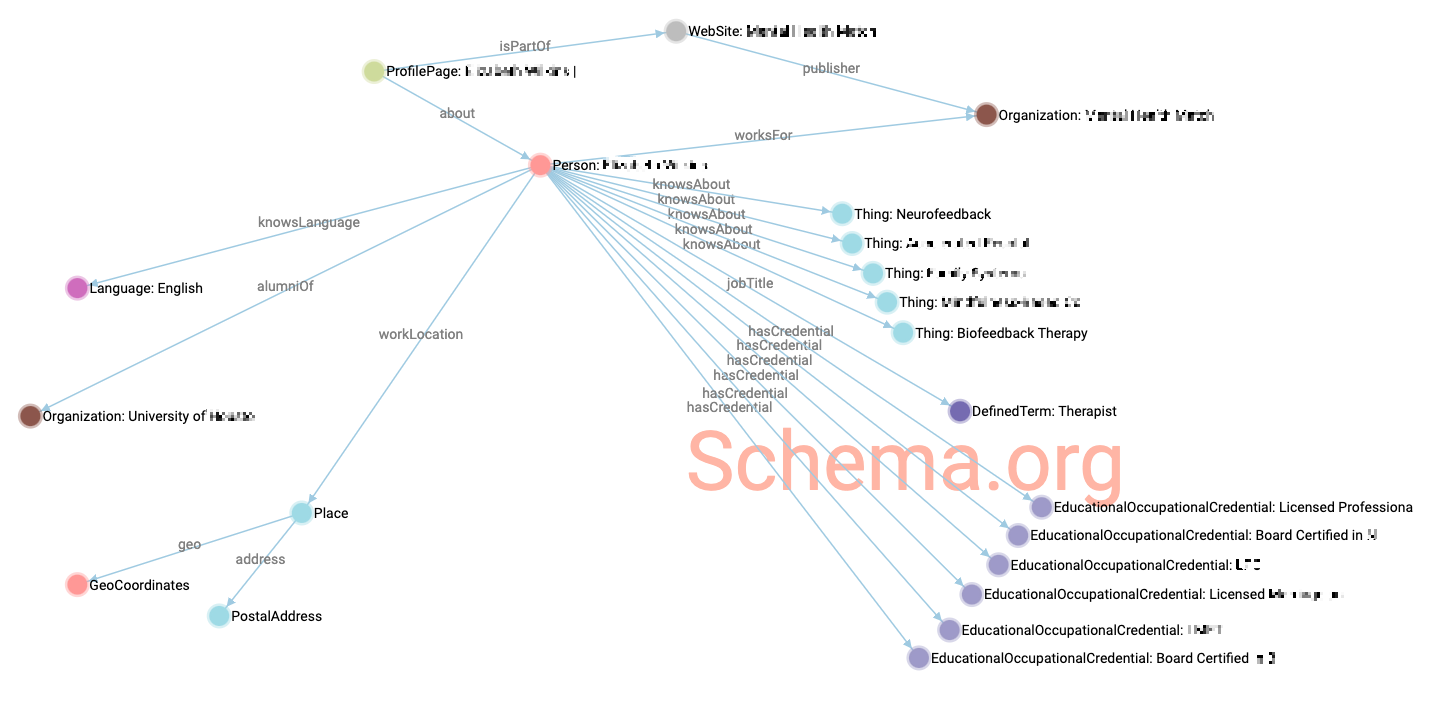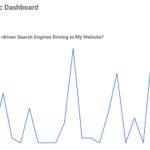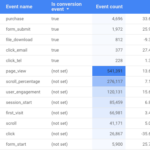Mastering the nested json-ld schema example is an advanced, but increasingly important step towards semantic SEO optimization.
Pages contain more than one type of information or entity and each should be related within a structured hierarchy. We have used this technique to improve our client’s website visibility on search engines. It allows you to have more than one schema type per page and link them together for better relationship management and structure.
Combining Nested schema, when used correctly, can enhance how search engines understand and present your content in SERPs (Search Engine Result Pages) as the elements of the page become more organized and integrated as related “strings of things.”
It’s not unusual for webmasters and developers to place json-ld structured data types in the code of a page, test for validation, and think everything is complete. It may even validate as proper schema in quality control testing tools. But creating truly elegant scripts that combine multiple structured data types is a complex, but valuable skill for those looking to build for the semantic web.
Table Of Contents:
- Decoding Combined Semantic SEO
- Connected or Nested Schema Markup
- Combining Correct Schema Markup
- Creating Your Own Knowledge Graph Using JSON-LD
- Practical Scenarios For Nested Schema Implementation
- Connecting Different Schema Types Together
- FAQs in Relation to Nested JSON-LD Schema Example
- Final Thoughts
Decoding Combined Semantic SEO
In digital marketing, semantic SEO is an often underrated, but key player. It enhances search engine understanding by transforming unstructured data into structured information objects.
Structured data isn’t just putting together a list or table, but tagging language and integrating a “net” of references at the code level. Google and other search crawlers read and interpret structured data to create meaningful context of entities. Context is what often anchors the content into a particular topic or reference cluster.
The Objective of Semantic SEO
Semantic Search Engine Optimization (SEO) has one main focus: organizing and making sense out of data points.
By translating unstructured data into an organized format, it allows Google and other search engine algorithms to better comprehend entities and their interconnections within your website’s content.
This strategy employs standardized schema markup based on Schema.org and linked data structures like JSON-LD to deliver results to search engine crawlers. This creates richer user experiences that are more informative for visitors searching for information. Schema and knowledge graphs provide more relevant results tailored towards users’ queries.
Present vs Future State of Semantic Search
The present state of semantic search plays a significant role in how we optimize our websites for visibility on SERPs (Search Engine Results Pages). The potential for further developments in AI technology can better prepare algorithms to understand and answer more question-based queries.
Incorporating semantic practices now can set brands up for long-term success online by tightly integrating their brand with topics and strings of things in search and language models.
A component in semantic SEO is Google’s Knowledge Graph. This graph collects large amounts of web-based information about various objects, people, places, etc., organizing it for users via Search Engine Results Pages (SERPs).
This focus on interconnections between different entities rather than mere keywords leads to more relevant results for users. Brands that have managed to establish themselves as recognizable entities within this Knowledge Graph tend to secure higher ranks on SERPs.
Potential Drawbacks For Websites & Brands Not Integrated With the Knowledge Graph
In contrast, websites or brands failing to integrate with Google’s Knowledge Graph could face disadvantages. Traditional signals such as backlinks or keyword density are losing influence due to their potential misuse; instead, entity recognition has emerged as an important factor in establishing E-E-A-T or Experience, Expertise, Authority, and Trust.
If your brand hasn’t been recognized yet by this portion of search algorithms, you may be missing out on opportunities related to visibility and traffic, which can directly impact conversions.
Connected or Nested Schema Markup
The concept of connected schema markup is simply creating links between different types of schemas, forming what we call a “knowledge graph.” This interconnected network serves as an invaluable tool for search engines to decipher your webpage content and relationships of information.
Concept Of Connected Schema
A connected schema, or nested schemas as it’s often called, represents multiple interlinked schemas within structured data markup. By connecting various types of schemas together, you’re essentially giving detailed information regarding the entities on your page. For instance, if there’s an article penned by an award-winning author featured on your site, using Person and Award Schemas can help Google interpret this relationship better.
The visual example below of a Person schema makes it clear their ProfilePage is part of a WebSite and Organization. More information about the Person is provided for their occupation and experience in nested scripts that are all related as entities. Scanning the graphic, it takes very little to understand the relationships the information provides when you can see it in this format. The same can be said of search crawlers when they read nested schema.
 Nested Schema Markup for a Person on a WebPage in an Organization – Visualized with the Structured Data Viewer from classyschema.org
Nested Schema Markup for a Person on a WebPage in an Organization – Visualized with the Structured Data Viewer from classyschema.org
Tackling Common Hurdles With Structured Data Markup
Navigating through implementation isn’t always smooth sailing when dealing with connected schema markups due to common issues like incomplete or incorrect structured data found across many web pages. These problems could result in poor representation in SERPs (Search Engine Results Pages), and can even negatively impact visibility and click-through rates.
- Incomplete markups are instances where essential properties that should describe the entity are missing from its description.
- Incorrect markups involve misrepresentation or misuse of certain property values, which leads to inaccurate interpretations by search engines.
- Invalid markups use incorrect syntax in the code that an break the understanding by search crawlers.
The visual example below shows how ungrouped or separate schema markup scripts were added to a page without connecting or nesting the elements. They seem to float and require more information to relate the entities to each other.
Ungrouped (Not Nested) Schema example:
 While technically correct, this is an example of poorly grouped Markup on a WebPage.
While technically correct, this is an example of poorly grouped Markup on a WebPage.
Combining Correct Schema Markup
The process of implementing the correct schema markup starts with the fundamental aspects of semantic SEO. This includes incorporating WebPage schema on every webpage, be it product pages or blog posts.
Attributes Offered by Using WebPage Schema
A WebPage schema acts as a building block element in structured data markup. It guides search engines to comprehend the primary content and objective of your page.
This particular type of schema can be enriched with additional properties to provide more specific details about the page. For instance, an ‘about’ property could describe the main topic or entity discussed on that respective page.
Besides enhancing search engine comprehension, correctly implemented WebPage schemas also contribute towards rich results in SERPs (Search Engine Results Pages). These visually appealing listings not only attract user attention but often result in higher click-through rates (source here).
Nesting Schemas Within The Webpage Schema: An Approach To Structured Data Markup
- Dynamically Generated And Manually Created Markups Working Together:
In addition to using standalone schemas like Product or Article within webpages, nesting these inside a parent structure such as a WebPage allows each individual component to have its own context while being part of a larger whole – essentially creating an interconnected network across your brand’s presence. Nested schemas are useful when you want different elements related within one entity (like your brand) to be understood collectively by Google.
- Mitigating Misinterpretation By Search Engines:
If you’re utilizing both Product and Review schemas separately without embedding them under common parents (like Website), there may be issues with how Google connects these two pieces together.
To avoid this scenario, nested schemas provide a solution where all relevant information resides under a single roof, ensuring comprehensive relationships from the perspective of Google bots.
Mastering semantic SEO involves implementing the right schema markup, like WebPage schemas that help search engines understand your content. Nest it with other schemes for a holistic view of your brand or products to avoid misinterpretation by Google bots. This not only boosts comprehension but also enhances visibility in SERPs.
Creating Your Own Knowledge Graph Using JSON-LD
In semantic SEO, crafting your own knowledge graph with JSON-LD (JavaScript Object Notation for Linked Data) is becoming the standardized solution. This technique allows you to define various aspects once and reference them multiple times using Unique Resource Identifiers (URIs).
Example of Person Schemas URI Referencing
This approach serves both static elements like authorship details and dynamically generated components such as product information. For example, imagine an online bookstore where each book page features the respective author’s data. Instead of duplicating this information on every book page, you can create one person schema containing all relevant details and cite it via URI on each individual book entry.
This practice not only reduces redundancy but also ensures consistency across your website’s structured data markup. Additionally, any future updates, such as revising an author’s biography, only need to be implemented in the original person schema.
If you are familiar with working with CSS Classes to visually markup fonts, buttons or other elements on a website, you can relate that experience to working with URIs. Create one map that is referenced across the site to maintain consistency.
Practical Scenarios For Nested Schema Implementation
The rise of AI technologies like large language models (LLMs) has revolutionized content generation. However, this shift also brings unique challenges in terms of data structure and verification.
Usefulness during content generation via Large Language Models (LLMs)
In the context of LLM-generated content, one can question how authorship or contributor details are verified. Enter nested schemas – using Person schema markups within Article Schema helps authenticate information for search engines.
An example is an online magazine that publishes articles under various authors’ names. Here, each article could have its own Article schema markup with key metadata including publication date and main entity alongside the author’s name which links back to their respective central Person schema providing more detailed insights about them.
This not only aids in validating your website’s authenticity but also offers valuable context for search engine algorithms evaluating your site’s relevance and authority. Note: This approach aligns well with Google’s preference towards structured data as it strives towards better understanding of webPage entities and relationships. Search engines will continue to focus on providing authentic and trusted information and will use their Knowledge Graph to organize relational sets of information.
Connecting Different Schema Types Together
In an era where search engines are becoming increasingly sophisticated, why should you be concerned about connecting different schema types together?
This technique not only amplifies your site’s visibility, but also gives users more precise data about your company or business. As more data structures are provided ot search crawlers, making it as easy as possible to provide the correct data builds authority and trust for your brand.
Nested Schemas: The Building Blocks for Better SEO
Think of nested schemas as interconnected webpages serving as roadmaps for Google, Bing, and other search engines. Each URI serves like an artifact pointing towards specific data related to various aspects on your webpage such as product details or authorship info, etc.
The effective use of URIs enables efficient referencing within structured data markup, making it easier for Search Engine Bots to crawl through and comprehend complex relationships between may different entities.
Making Connections: Role Of Connectors In Nested Schemas
Connectors play a pivotal role when dealing with connected schema markups; they link one schema type with another, forming ‘nested’ relationships between varied elements represented across multiple pages/sections. This technique allows comprehensive detailing around associated entities without repetitive inputs.
Steps to Implement Connected Schema Markup
- Start by identifying all relevant entities along with their inter-relationships for the page.
- Define them using the correct schema types (webPage, Author, Recipe).
- Create a hierarchy by deciding what the main structured data type is for the page (typically a webPage).
- Combine or nest structured data inside the main script (dependencies).
- Establish links via nesting through the proper usage of URIs and connectors.
- Test for Validation and Publish.
Remember, a well-executed semantic SEO strategy can drastically improve both organic traffic and conversion rates while ensuring an enhanced user experience due to its precise entity representation.
FAQs in Relation to Nested JSON-LD Schema Example
What is a JSON-LD schema?
A JSON-LD schema is a method of structuring data using Linked Data principles, enabling search engines to better understand and index the content on your website.
What are the benefits of using nested schema?
The benefits of using nested schema are creating correctly layered item types to build a contextual relationship between objects. Webpages and content will have multiple dependencies, correctly marking these up builds a stronger context.
Final Thoughts
You now understand that it’s all about translating unstructured data (any information such as words, entities, table data) into structured data for Google to better comprehend entities and their relationships.
The significance of being recognized as an entity in Google’s Knowledge Graph vs just providing traditional on-page and off-page signals are becoming more relevant.
We dove into connected schema markup where one schema type links with another forming a network or ‘knowledge graph’ aiding search engines in understanding your content better.
Nested json-ld schemas have emerged as key players. Turning each type into Unique Resource Identifier (URI) followed by appropriate connectors and creating your own knowledge graph using JSON-LD can help define “things” once. With a standarized definition, they can be referenced multiple times throughout a webPage.
If you’re ready to boost visibility and understand Google’s Knowledge Graph better through nested json-ld schema examples, WHO Digital Strategy is here to guide you every step of the way. Our digital marketing agency specializes in implementing effective strategies tailored for your brand. Let us help you unlock the full potential of semantic SEO today!







